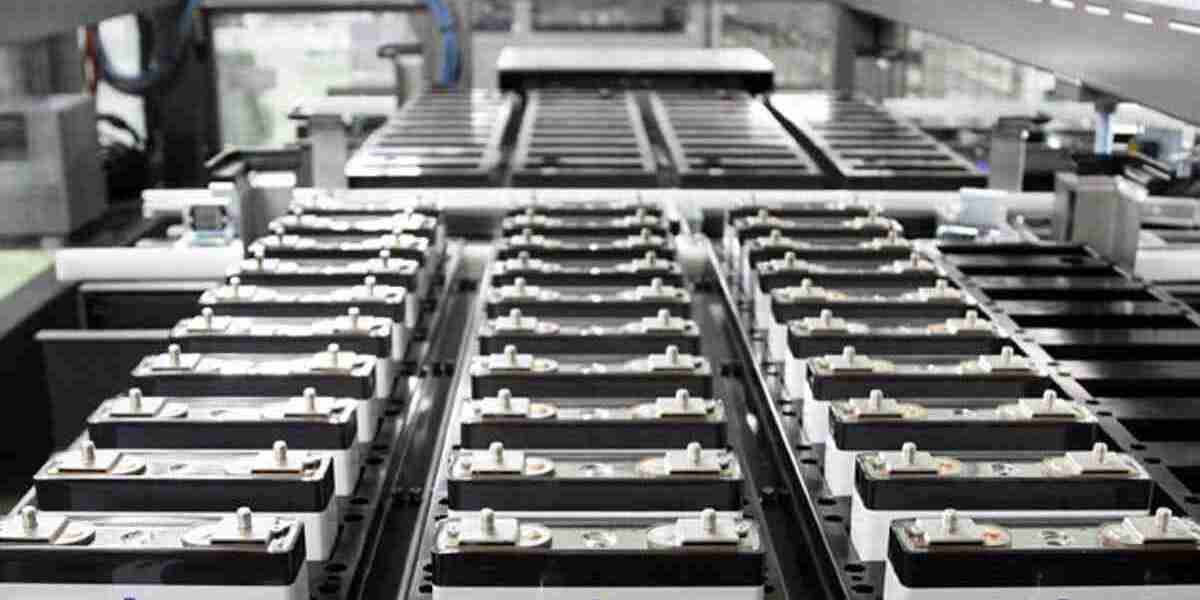The Li-Ion Battery Electrode Coating Market is witnessing rapid expansion, driven by the increasing focus on reducing internal resistance within lithium-ion batteries. As energy storage technologies evolve and demand for high-performance batteries intensifies across various sectors—particularly electric vehicles (EVs), consumer electronics, and renewable energy storage—minimizing internal resistance is becoming a key goal for battery manufacturers. Reducing internal resistance enhances the overall efficiency, power output, and longevity of lithium-ion batteries, which are crucial for many modern applications.
Understanding Internal Resistance in Lithium-Ion Batteries
Internal resistance refers to the opposition to the flow of current within a battery, caused by various factors such as the resistance of the electrolyte, electrodes, and current collectors. High internal resistance can result in poor battery performance, reduced charging speeds, lower energy output, and excessive heat generation, which can ultimately shorten the battery's lifespan. As a result, one of the major challenges in lithium-ion battery development is finding ways to reduce this internal resistance without compromising other performance aspects.
The reduction of internal resistance is critical for ensuring that lithium-ion batteries can meet the high demands of modern applications, especially in electric vehicles (EVs) where longer range, faster charging times, and improved efficiency are essential for widespread adoption.
Focus on Electrode Coating Technologies
Electrode coatings are a pivotal aspect of lithium-ion batteries, playing a direct role in their performance and resistance characteristics. By applying specialized coatings to the battery’s anode and cathode materials, manufacturers can reduce internal resistance, improve ion transport efficiency, and enhance overall energy efficiency.
The key coating materials and techniques that are proving effective in reducing internal resistance include:
Conductive Coatings: Coatings that enhance the conductivity of the electrode materials are being developed to lower internal resistance. These coatings often include conductive additives such as carbon black, graphene, and carbon nanotubes. These materials provide enhanced pathways for electron flow, reducing the resistive losses within the battery.
High-Surface-Area Coatings: By increasing the surface area of the electrode materials, coatings can provide more contact points for ion movement, thus reducing resistance. High-surface-area coatings, such as those made from porous materials like graphene oxide, allow for better charge-discharge kinetics, improving the overall efficiency of the battery.
Nano-Coatings: Nano-coating technologies have proven to be particularly effective in reducing internal resistance. By applying coatings at the nanometer scale, manufacturers can achieve a more uniform and consistent electrode surface, minimizing any irregularities that could cause resistance. Nano-coatings also improve the structural integrity of the electrodes, leading to better cycling stability and higher performance over time.
Ceramic Coatings: Ceramic-based coatings are another emerging technology aimed at reducing internal resistance. These coatings provide excellent thermal stability, preventing overheating during high-power charging and discharging cycles. The use of ceramic coatings can improve the overall energy efficiency and safety of lithium-ion batteries.
Market Drivers: Electric Vehicles and Energy Storage
The drive to reduce internal resistance in lithium-ion batteries is being propelled by the increasing demand for batteries with higher efficiency, faster charging capabilities, and longer lifespans. Electric vehicles (EVs), in particular, are a significant market driver. The growing adoption of EVs is placing immense pressure on manufacturers to develop batteries with high energy densities and reduced internal resistance to achieve longer driving ranges and shorter charging times. Batteries that experience less internal resistance can charge faster, discharge more efficiently, and provide a higher energy output, making them essential for the success of the EV market.
Similarly, the rise of renewable energy storage systems is contributing to the market's expansion. As solar, wind, and other renewable energy sources become more prevalent, there is a growing need for efficient energy storage solutions to store and distribute power when generation is low. Lithium-ion batteries are seen as a key technology for such applications, and reducing internal resistance is essential for improving the overall efficiency and reliability of grid storage solutions.
Advantages of Reducing Internal Resistance
By reducing internal resistance through advanced electrode coatings, lithium-ion batteries experience several benefits:
Improved Charging Speed: Batteries with reduced internal resistance can charge more quickly because there is less opposition to the flow of current, making them ideal for high-demand applications such as electric vehicles.
Enhanced Energy Output: With reduced internal resistance, more of the energy stored within the battery is efficiently converted to power, resulting in higher energy output during discharge. This is particularly important for applications where high power is needed over extended periods.
Longer Battery Life: High internal resistance can lead to excessive heat generation during charge and discharge cycles, accelerating the degradation of the battery. By reducing internal resistance, the battery’s thermal stability is improved, leading to longer cycle life and greater overall longevity.
Better Safety: Batteries with lower internal resistance produce less heat, reducing the risk of overheating and thermal runaway—a significant safety concern in high-performance lithium-ion batteries.
Emerging Trends in Coating Techniques
The Li-Ion Battery Electrode Coating Market is evolving as new, more efficient coating methods are being developed. Some of the emerging trends in coating technologies include:
Green Coatings: With increasing environmental awareness, manufacturers are focusing on sustainable and eco-friendly electrode coatings that reduce the environmental impact of battery production. Water-based and solvent-free coatings are gaining popularity as they reduce the use of toxic chemicals and minimize carbon emissions during production.
Layered Coatings: Layered coatings, where different materials are applied in specific sequences, are being explored for their ability to further reduce internal resistance and enhance battery stability. These multi-layer coatings offer tailored properties for different battery applications, providing an optimized balance of conductivity, thermal stability, and longevity.
Future Outlook and Market Opportunities
The Li-Ion Battery Electrode Coating Market is expected to experience continued growth as manufacturers work to reduce internal resistance and improve battery performance across a range of industries. The global shift towards electric vehicles, renewable energy storage, and portable electronics is providing strong tailwinds for market expansion. Companies that can innovate in electrode coating technologies and meet the growing demand for high-performance batteries will be well-positioned to capitalize on the emerging opportunities in the energy storage sector.
As demand for lithium-ion batteries continues to rise, further advancements in electrode coating materials and techniques will be critical in driving improvements in efficiency, safety, and sustainability.




